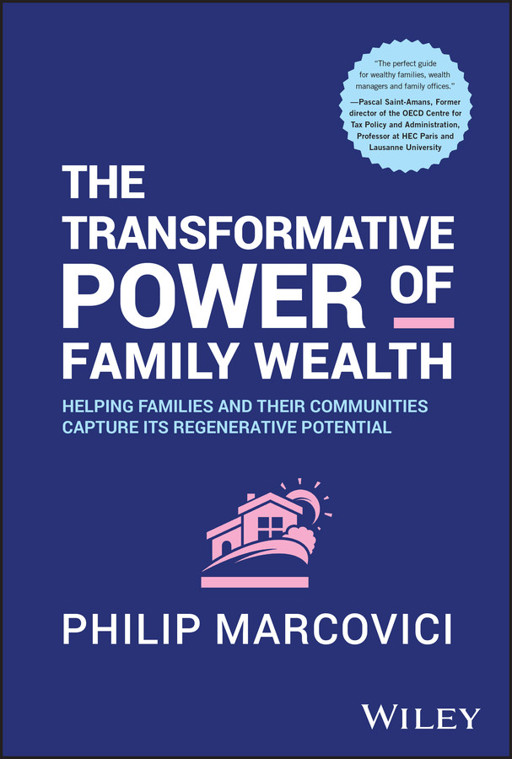The New Playbook: From YouTube to Feastables and Beyond
The phrase From YouTube to Feastables: The Diversification Strategy Defying Traditional Industries captures a broader movement in which digital creators translate attention into tangible goods, financial services, and institutional business lines. Variations such as From Social Video Platforms to Consumer Packaged Goods or From Creator Channels to Consumer Brands point to a structural shift: the attention economy is being converted into traditional economic capital. In short, creators are not just publishers of content — they are becoming vertically integrated consumer companies.
Context and Background: The Creator Economy Meets Consumer Goods
The scale of the creator economy
Over the last decade, platforms like YouTube have matured from hobbyist venues into serious commercial ecosystems. YouTube itself has generated tens of billions of dollars annually in ad revenue for its parent company in recent years, while the broader creator economy — including subscriptions, tipping, merch, and licensing — is estimated to be worth tens of billions of dollars annually depending on how broadly it is measured. That pool of monetizable attention is the raw material for producers looking to launch physical goods.
Feastables as a case study
Launched by a major creator in 2022, Feastables moved from online video and viral campaigns to chocolate bars, snack products, and seasonal releases. It illustrates how a successful channel can be leveraged to lower customer acquisition costs (CAC) and accelerate product-market fit. Feastables and similar ventures show that when creators bundle brand equity, distribution, and direct commerce, they can challenge established firms in fast-moving consumer goods (FMCG) categories.
Why Diversification Makes Economic Sense
The transition from YouTube channels to consumer brands is driven by several economic incentives:
- Monetization diversification: Ad revenue and platform monetization are volatile and platform-dependent; physical goods offer alternative revenue streams.
- Higher margins through owned brands: While many creators receive a cut from platforms, owning a product allows capture of wholesale, retail, and direct-to-consumer margins.
- Customer lifetime value (LTV): Loyal fans have higher LTV when offered branded products, memberships, and repeat-purchase items.
- Cross-selling and bundling: Physical products create opportunities for limited editions, collaborations, and premium price points.
- Intangible asset formation: A creator’s brand is an intangible capital asset that can be leveraged, licensed, or sold — often commanding high multiples.
Business Model Mechanics: How the Shift Works
Revenue streams and unit economics
Creators-turned-brands typically blend multiple revenue channels:
- Direct-to-consumer (DTC) sales: Lower margins initially but higher control and data capture.
- Wholesale and retail partnerships: Provide scale but reduce margin via retailer cuts.
- Licensing and co-branding: Monetize brand without capex-heavy manufacturing.
- Subscription models and bundles: Stabilize revenues and increase recurring income.
Unit economics vary across channels. For example, a DTC snack business often sees:
- Gross margins of 30–60% depending on product and scale
- Customer acquisition cost (CAC) greatly reduced by owned media — creators can convert audiences at a fraction of typical ad rates
- Return rates and shelf-life concerns that affect per-unit profitability
Comparative Economics: Creators, Feastables, and Traditional CPG
Below is a simplified comparative snapshot that illustrates structural differences. Numbers are indicative and reflect industry estimates rather than audited financial statements.
| Metric | Typical Large Creator/Platform (YouTube) | Creator-Branded CPG (Feastables-style) | Traditional CPG Firm |
|---|---|---|---|
| Annual Revenue (approx.) | Platform ad revenues: tens of billions (global for platform) | Early-stage brand: $1–50 million (varies widely; rapid growth possible) | Large CPG: $1 billion+ for major brands |
| Gross margin | Platform: high gross margin on ads | 30–60% (DTC) depending on supply chain and scale | 20–50% depending on category and scale |
| Customer acquisition cost (CAC) | Low for creators (owned audience) | Very low initially due to owned channels; increases when scaling outside core fanbase | High; relies on mass media and retail promotion |
| Channel mix | Digital ads, subscriptions, sponsorships | DTC, ecommerce marketplaces, retail rollout | Retail, distributor networks, e-commerce, B2B |
| Scale-up barriers | Monetization limits, platform policy changes | Manufacturing, supply chain, retailer acceptance | Brand refresh, innovation cycles, channel competition |
Strategic Advantages and Risks of Creator-Led Diversification
The move from social channels to snack aisles brings clear advantages but also distinct risks:
Advantages
- Built-in distribution of attention: Creators control distribution via feeds, communities, and email lists.
- Faster product validation: Rapid feedback loops from fans reduce market research costs.
- Higher willingness-to-pay: Fans often pay a premium for branded goods associated with creators they trust.
- Story-driven marketing: Narrative and authenticity can outperform traditional advertising for product launches.
Risks and constraints
- Operational complexity: Manufacturing, quality control, and distribution are not core competencies of most creators.
- Brand risk spillover: Controversy affecting the creator can immediately damage product sales and vice versa.
- Platform dependency: If a creators discoverability declines, the funnel for product sales narrows.
- Retail dynamics: Getting shelf space is expensive and competitive; retailers may prefer established suppliers.
- Regulatory/safety issues: Food, cosmetics, or financial products face strict compliance requirements.
Financial Structures and Capital Markets Interest
Creator brands often attract capital in varied structures:
- Angel and seed rounds: To fund initial production runs and marketing.
- Strategic partnerships: With manufacturers, co-packers, and retail distributors providing capital or favorable terms.
- Private equity and growth capital: For scaling distribution into major retailers or international markets.
- Licensing agreements: Allowing creators to monetize without taking on manufacturing risk.
Investors are increasingly treating creator brands as a new asset class within consumer-facing investments. Valuations often hinge on metrics such as engaged audience size, purchase conversion rates, repeat purchase frequency, and gross margin.
Market Data and Forecasts Shaping the Playbook
To understand the economic potential, consider these indicative data points:
- Creator economy revenue (global): Estimates vary; many analysts put total monetization (ads, merchandise, subscriptions) in the tens of billions per year.
- Confectionery/snack global market: The broader snack and confectionery categories are typically measured in the low hundreds of billions annually, offering substantial TAM (total addressable market) for niche entrants.
- DTC growth: Direct-to-consumer channels have grown rapidly, though the marginal CAC has increased as competition intensifies.
- Retail churn: Retail shelf space commands promotions that can reduce net margins; onboarding costs must be factored into break-even analyses.
Implications for Traditional Industries
For CPG incumbents
Traditional consumer packaged goods firms must adapt to an environment where authenticity and narrative can displace large advertising budgets. Strategies include:
- Partnerships or acquisitions: Buying creator brands to inject new energy and reach.
- Incubation programs: Creating internal studios to work with influencers and rapid-launch teams.
- Digital-first experimentation: Allocating budgets to test creator-driven DTC channels before full retail rollout.
For retailers
Retailers face both opportunity and risk: stocking creator brands can drive traffic and novelty, but it can also introduce volatility if demand is concentrated among a single fanbase. Retailers must balance assortment diversity with inventory risk management.
For investors
Investor thinking must evolve to price intangible audience assets and factor in creator-specific risks such as reputation and platform policy. Financial models often combine traditional CPG KPIs with metrics common in digital media (engagement rates, watch time).
Operational and Supply Chain Realities
Converting views into groceries requires operational depth:
- Co-packing and quality management: Reliable co-packers with food-safety certifications are non-negotiable.
- Inventory forecasting: Fan-driven demand can spike unpredictably after viral moments, necessitating flexible manufacturing agreements.
- Logistics and returns: Consumer returns, shelf-life, and cold-chain considerations for certain products add cost.
Future Trajectories: Scenarios for From YouTube to Feastables and Similar Moves
Several plausible scenarios suggest how this movement could reshape industries:
- Consolidation scenario: Large incumbents acquire successful creator brands, integrating creative marketing with established supply chains.
- Hybrid ecosystem: Creators retain brand control while outsourcing operations to white-label manufacturers, scaling via marketplaces and selective retail partnerships.
- Vertical integration: Some creator companies evolve into fully integrated consumer firms, hiring operations teams and building long-term product pipelines.
- Regulatory friction: More stringent disclosure and advertising regulations increase compliance costs, pushing some creators to partner with experienced operators.
Each path suggests different investment, managerial, and policy responses. What remains consistent, however, is the core economic logic: attention is a scarce input that, when owned, reduces CAC and creates leverage for product businesses. The most successful instances of the trend tend to be those that recognize the gaps between content creation and consumer goods execution, and that invest early in operational capabilities rather than relying solely on viral marketing for repeatability.
Quantitative Metrics Creators Should Track
Creators and investor partners should monitor a hybrid set of metrics that marries digital and CPG KPIs:
- Conversion rate from content to purchase (percent of viewers who buy)
- Repeat purchase rate (crucial for consumables)
- Gross margin by channel (DTC vs retail vs wholesale)
- Inventory turnover days and working capital intensity
- Customer acquisition cost (CAC) by channel adjusted for organic reach
- Brand sentiment and reputation indicators across social channels
Combining these indicators allows creators to run informed scenario analyses about whether to push for rapid retail expansion or to consolidate strength within a loyal DTC audience. Financial projections for a creator-led snack brand will often show high initial volatility in cash flow, followed by potential stabilization if repeat purchases and distribution partnerships mature.
Open Questions and Emerging Areas of Research
The phenomenon of creators moving into traditional industries opens several research and policy questions:
- How should intangible social capital be priced and amortized on a balance sheet?
- What new types of contracts and insurance products will arise to cover reputation and viral-traffic risk?
- How will competition law and antitrust frameworks respond if a few creators capture outsized audience monopolies?
- What are the labor implications as creators build teams that straddle media, manufacturing, and retail?
As creators pursue strategies ranging from quick merch drops to full-scale CPG launches, stakeholders across finance, manufacturing, and regulation will need to adapt measurement tools and governance frameworks. The journey From YouTube to Feastables: The Diversification Strategy Defying Traditional Industries is less a single pathway than a set of strategic experiments that, collectively, are redrawing the boundaries between culture, commerce, and industry



